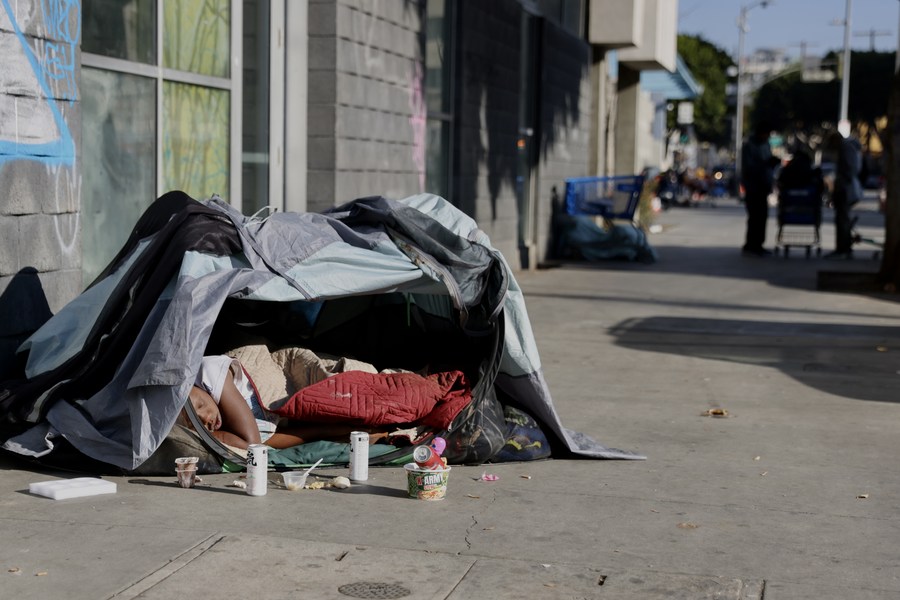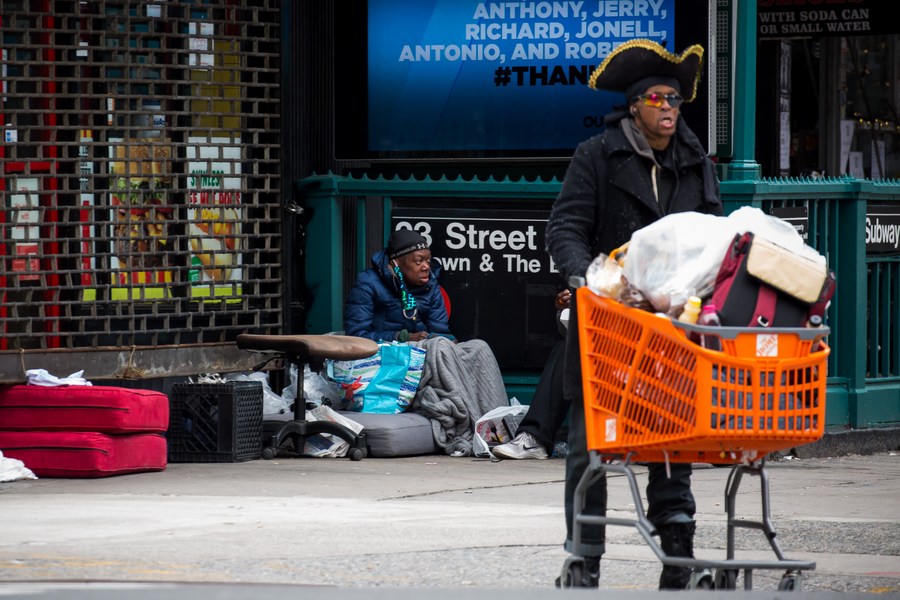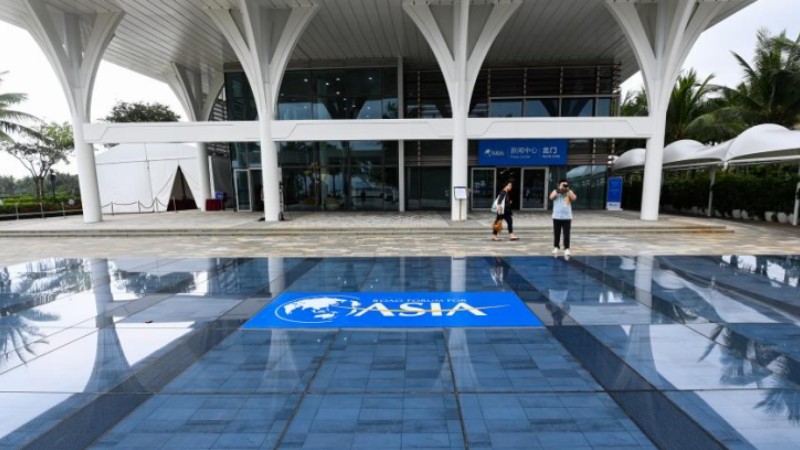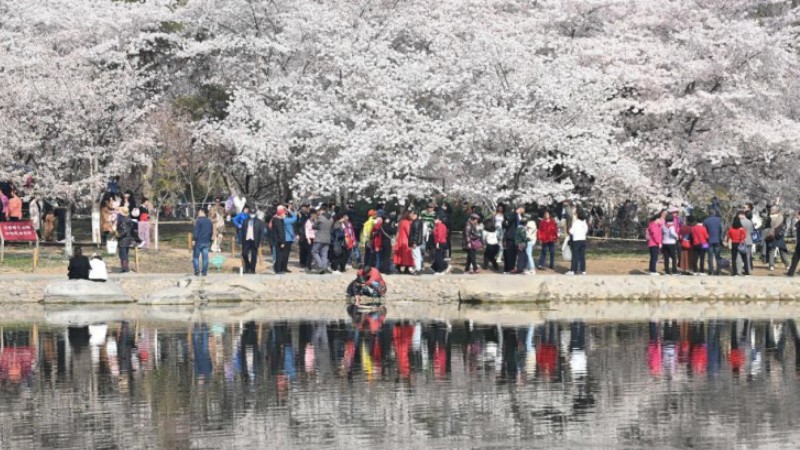Unsheltered Americans, shattered American dream

A homeless person is seen on the sidewalk in downtown Los Angeles, California, the United States, Dec. 14, 2022. (Xinhua)
LOS ANGELES, April 2 (Xinhua) -- Inside a shabby van deserted beside a road in Harbor City, a neighborhood in Los Angeles, Hicks -- as she prefers to be addressed -- hunkered down against the freezing winter storm that was ripping through the United States.
The jobless 43-year-old could not afford the rent, and ended up living in the van for three months. Like her, millions have lost their jobs as the pandemic sent shock waves across the U.S. labor market, which still sees lopsided recovery rates in different states.
Under mottled tarpaulins, the Black woman woke up each day not to the lofty American dream -- a set of ideals in which everyone is blessed with the opportunity for individual prosperity and success regardless of social class -- but to the more realistic hope that she could find somewhere safer.
Hicks' "neighbor," a man called Mike, 72, was in a more worrisome condition. Sitting in a wheelchair beside scattered tote bags, he had to weather cold nights without any shelter, with only an adopted dog as company.
Mike had been sent to the hospital by the police due to his deteriorating health condition, but he continued to sleep outside after being discharged.
The situation does not bode well for Hicks and Mike, who are among roughly 69,000 people living unsheltered across Los Angeles (LA) County, whether in encampments that have popped up in parks and other public spaces since the pandemic began or in vehicles without regular access to necessities like electricity or water.

A homeless person is seen on the sidewalk in downtown Los Angeles, California, the United States, Dec. 14, 2022. (Xinhua)
The number marks a 4.1 percent increase from the last count in 2020, when the Los Angeles Homeless Services Authority reported that over 66,000 people experienced homelessness.
LA County declared a state of emergency over the homeless crisis earlier this year, and the county Board of Supervisors vowed to make a real difference in "getting people off the street and giving the care they need." The declaration brought hope for the homeless, as it used to take as long as a year for them to apply for a shelter and get approved.
The U.S. Department of Housing and Urban Development estimates that 582,462 people were experiencing homelessness on a single night in January 2022 across the country.
A bigger concern for officials has been the growing number of homeless children, a sign of acute intergenerational poverty.
The latest number of homeless students in New York City stood over 100,000, topping 100,000 for the seventh consecutive school year stretching from September 2021 to June 2022, according to a 2022 October report by the non-profit organization Advocates for Children of New York. That number was up 3.3 percent from the prior year, meaning approximately one in ten students enrolled in city public schools was homeless.
The report highlighted among the group an alarmingly low rate of school attendance, bad academic performance and the drop-out rate of students living in shelters was three times that of their peers who have fixed residences.
While thousands of homeless people are worrying about their next meal, the Biden administration is splurging billions of dollars on arms aid to Ukraine. This has prompted analysts to call on the administration to spend money where it's needed most, for example to combat domestic homelessness, instead of ending up in arms dealers' pockets.

Homeless people are seen near a subway station in New York, the United States, April 27, 2020. (Photo by Michael Nagle/Xinhua)
ENTRENCHED PROBLEM
The causes of homelessness can seem intractable, involving everything from intergenerational poverty and domestic violence to mental illness and drug abuse.
Start with a lack of affordable housing. The United States has experienced several waves of homelessness starting from Colonial America to the Great Recession. The current homelessness crisis dates back decades, stemming from public policies that prevented the country from building enough housing, said Jeff Olivet, executive director of the U.S. Interagency Council on Homelessness.
Affordable housing has gone from a glut to a shortage of 7 million rental homes to extremely low-income renters, according to statistics compiled by the National Low Income Housing Coalition. Inflation is compounding the problem: rents have been running high, putting affordable housing out of the reach for many.
Systemic racism plays a role, too. Of the homeless in LA County, roughly 30 percent are Black, compared with 9 percent of the population in 2022, and the number of unsheltered Latinos has increased 25.8 percent from 2020, according to media reports.
These racial and ethnic groups, who are barely making ends meet, bear the brunt of the ongoing pandemic, mired in a cost-of-living squeeze. For those without a legal U.S. identity, claims to government benefits and aid are often denied.
All these factors tend to obscure the chief culprit -- ingrained income inequality. The gap between the rich and poor remains stark as more than 40 million Americans live in poverty. In the third quarter of 2022, 68 percent of the total wealth in the country was owned by the top 10 percent of earners, according to a survey by Statista, a market research firm. In comparison, the lowest 50 percent of earners only owned 3.3 percent of the total wealth, it said.
The poor are more vulnerable to diseases, unemployment and accidents, teetering on the brink of losing shelter. Given no universal health insurance coverage in the United States, 27.2 million, or 8.3 percent of the population, remained uninsured in 2021, according to statistics by the U.S. Census Bureau. Many delay -- or quit -- getting medical help because of skyrocketing costs.
Calls are mounting for economic, social and healthcare measures to eradicate homelessness from various communities. If the Biden administration continues to drag its feet or dismiss the problem, the American dream may sound inspiring, but rings hollow.
Photos
Related Stories
- Interview: U.S. system plutocratic rather than democratic, British commentator says
- U.S. pulls back from values once defining it: poll
- Federal gov't sues U.S. railroad over discharge of pollutants, hazardous substances
- U.S. "Summit for Democracy" triggers division, confrontation: spokesperson
- Interview: Expert says U.S. must apply human rights principles to its own society given shortcomings
Copyright © 2023 People's Daily Online. All Rights Reserved.









